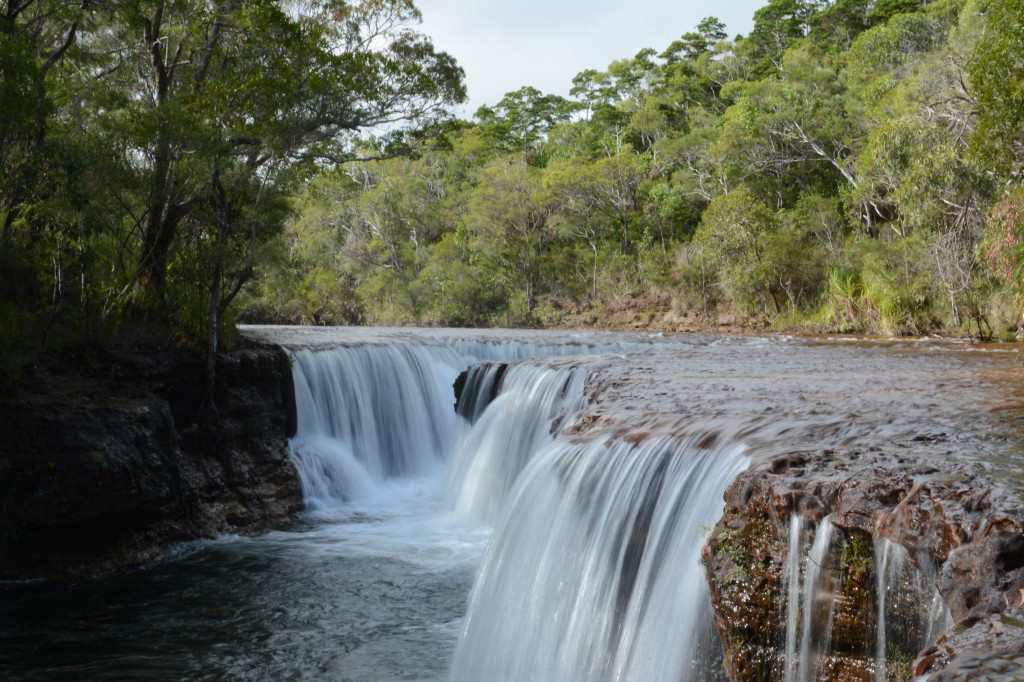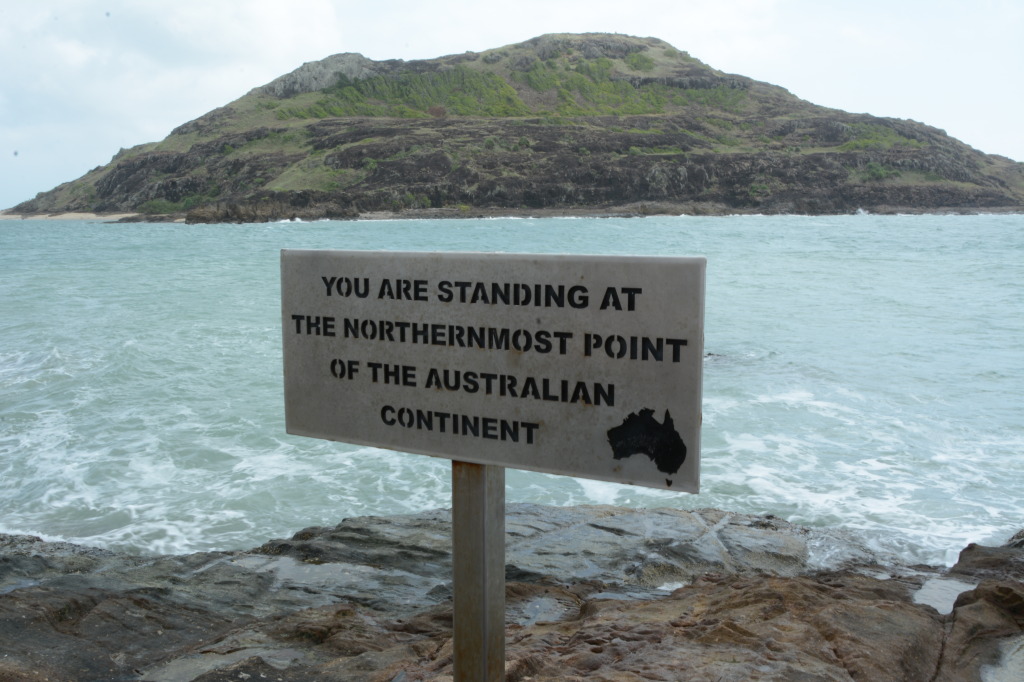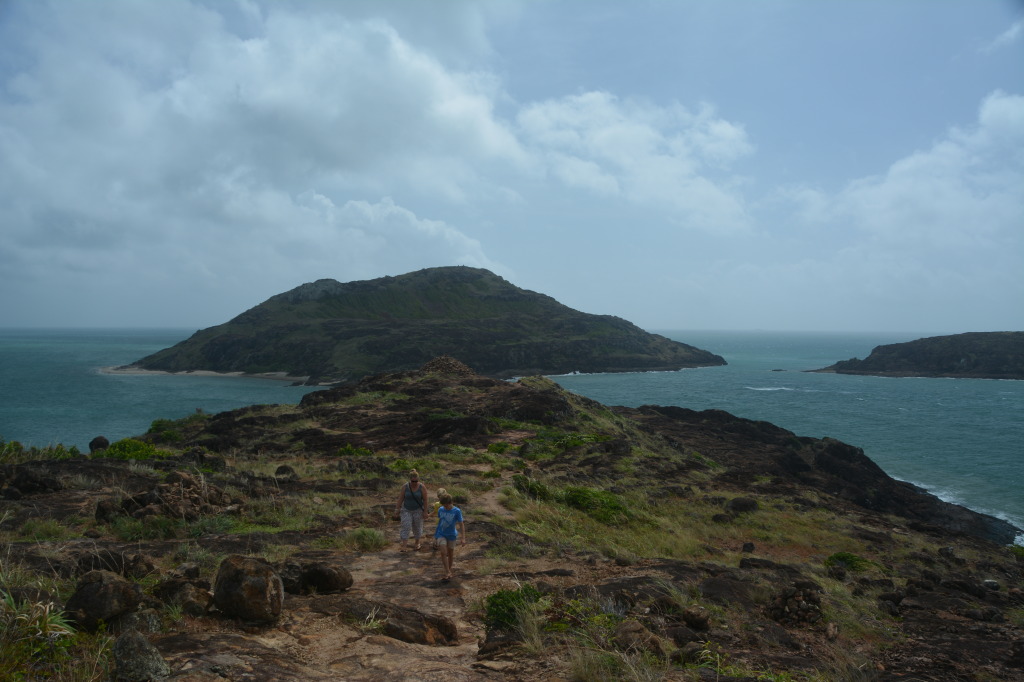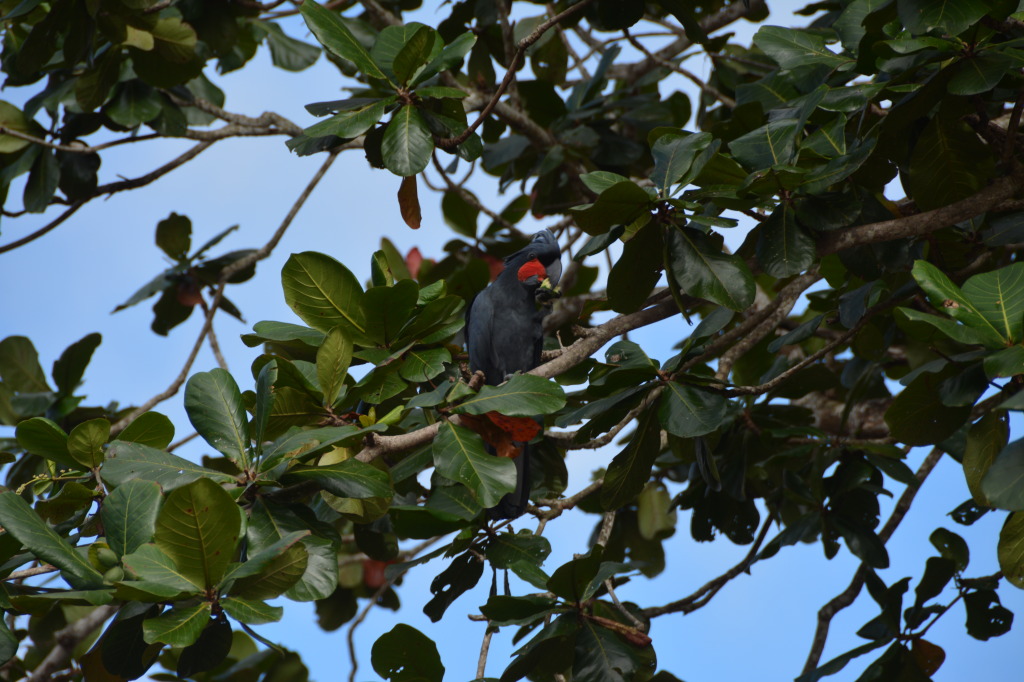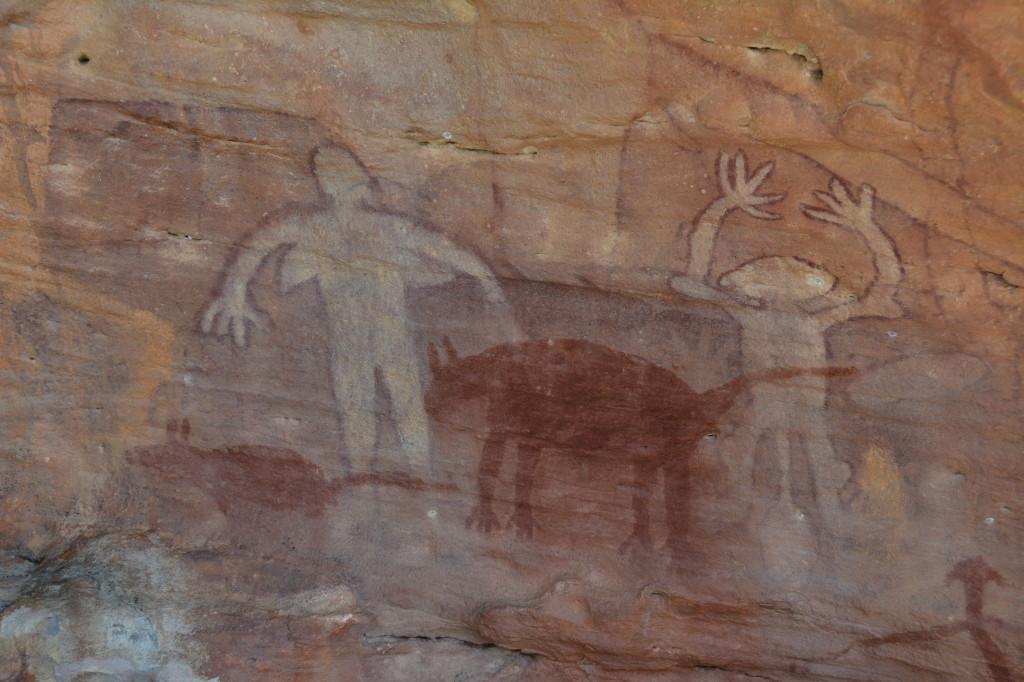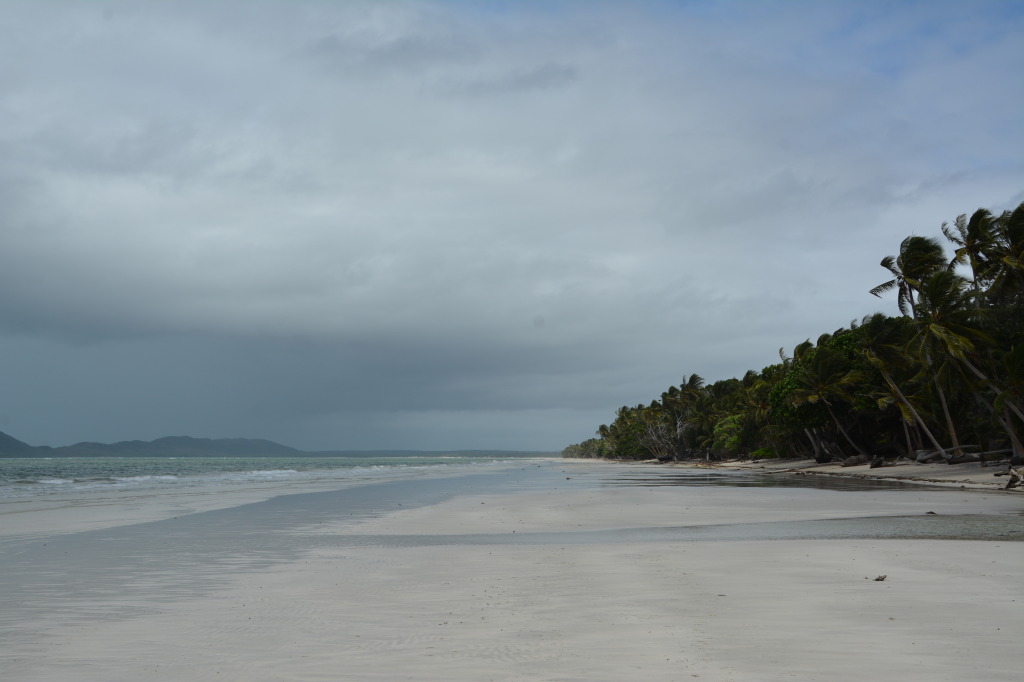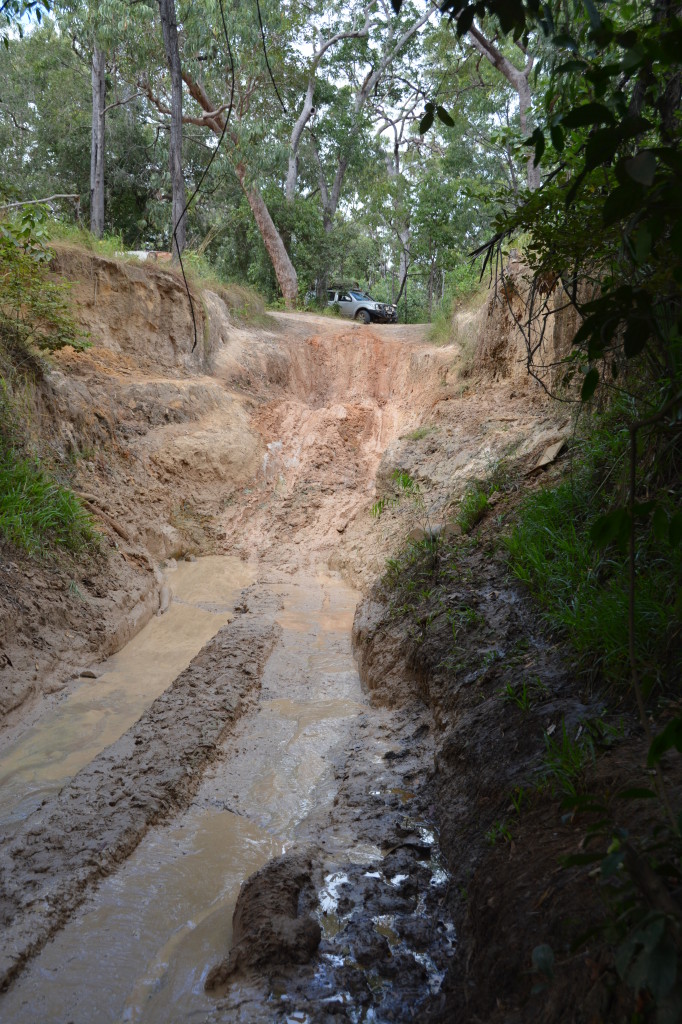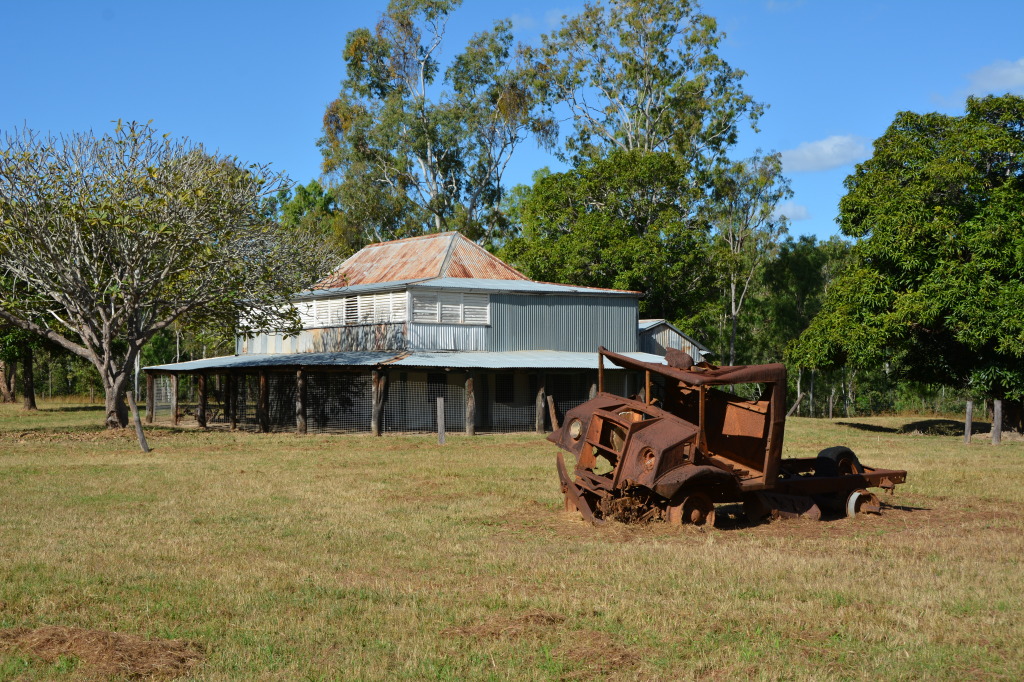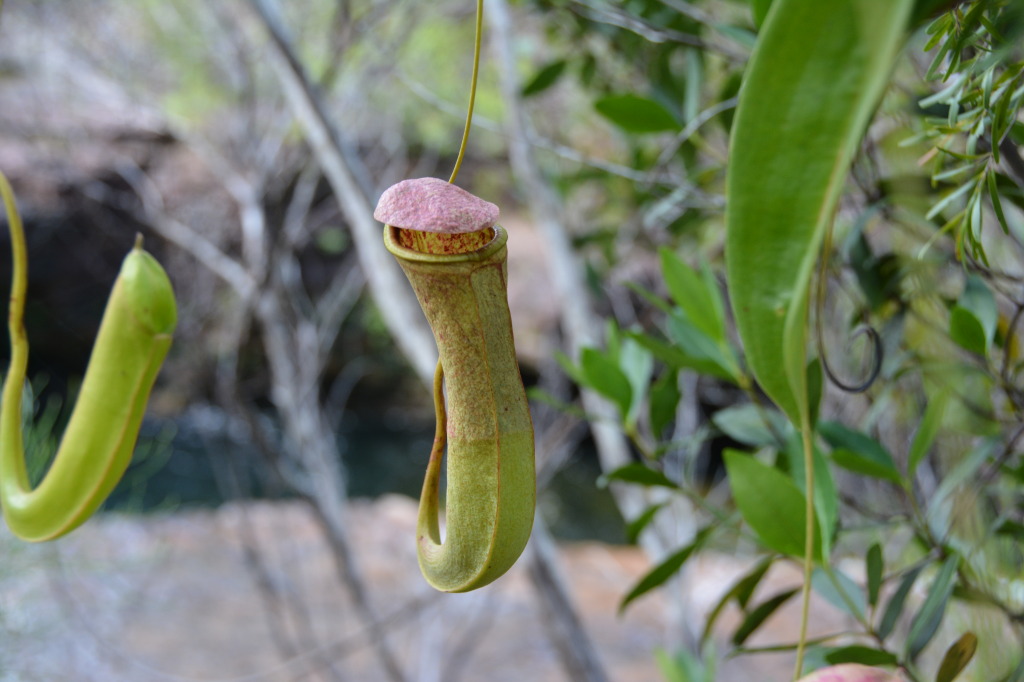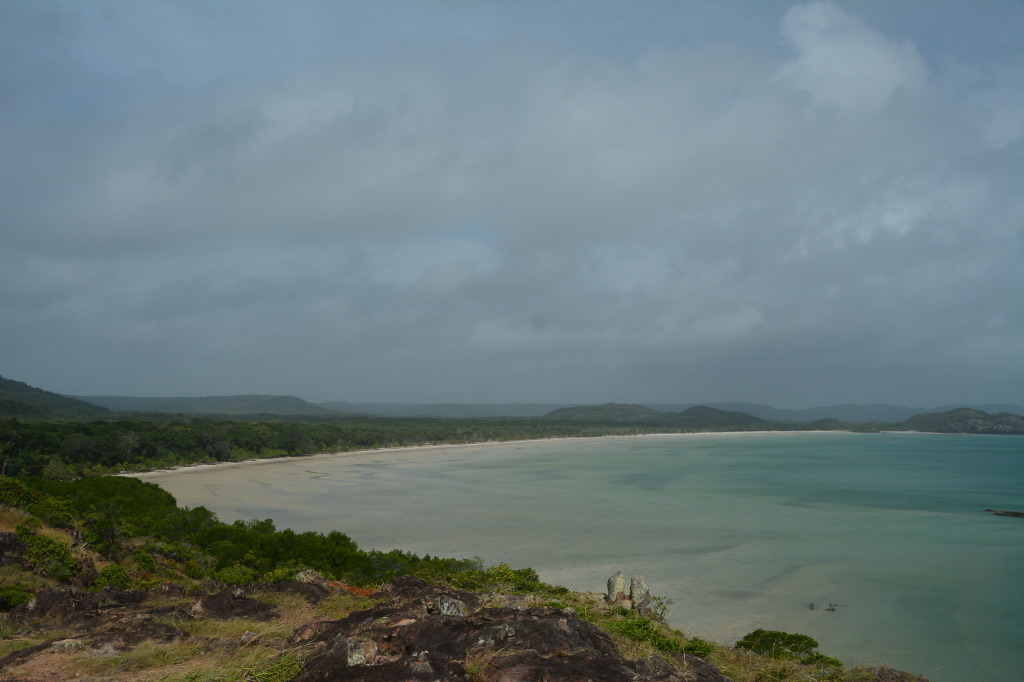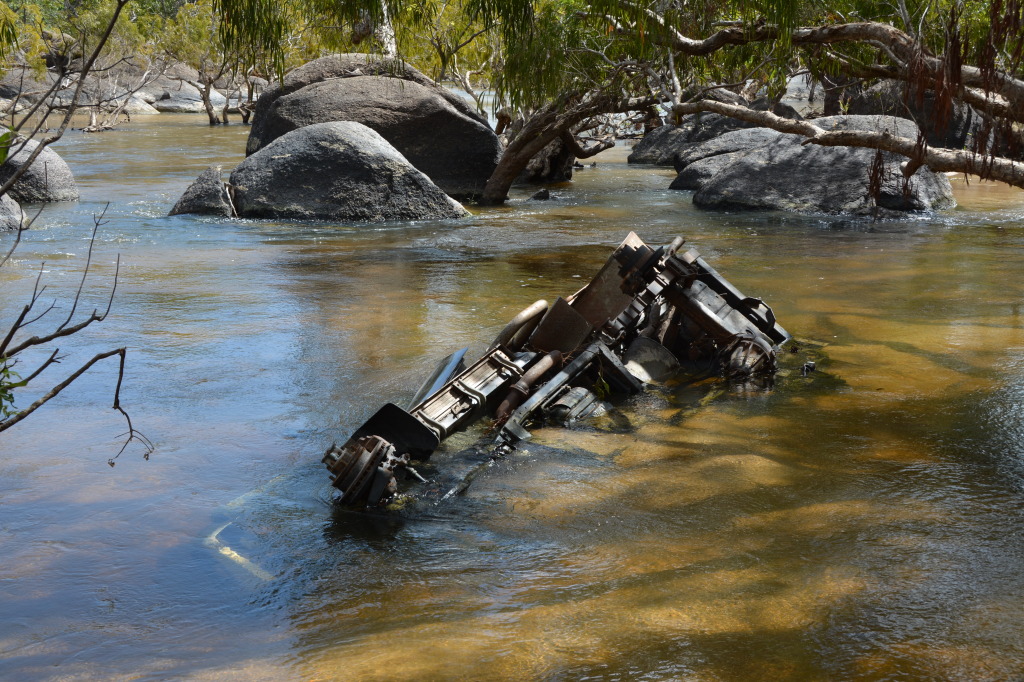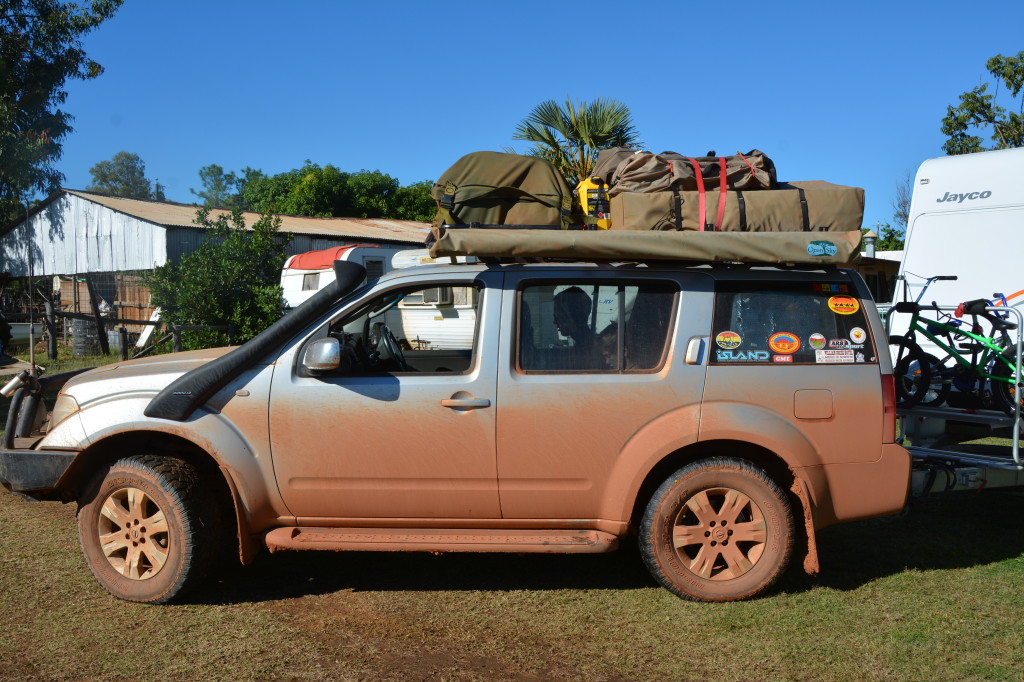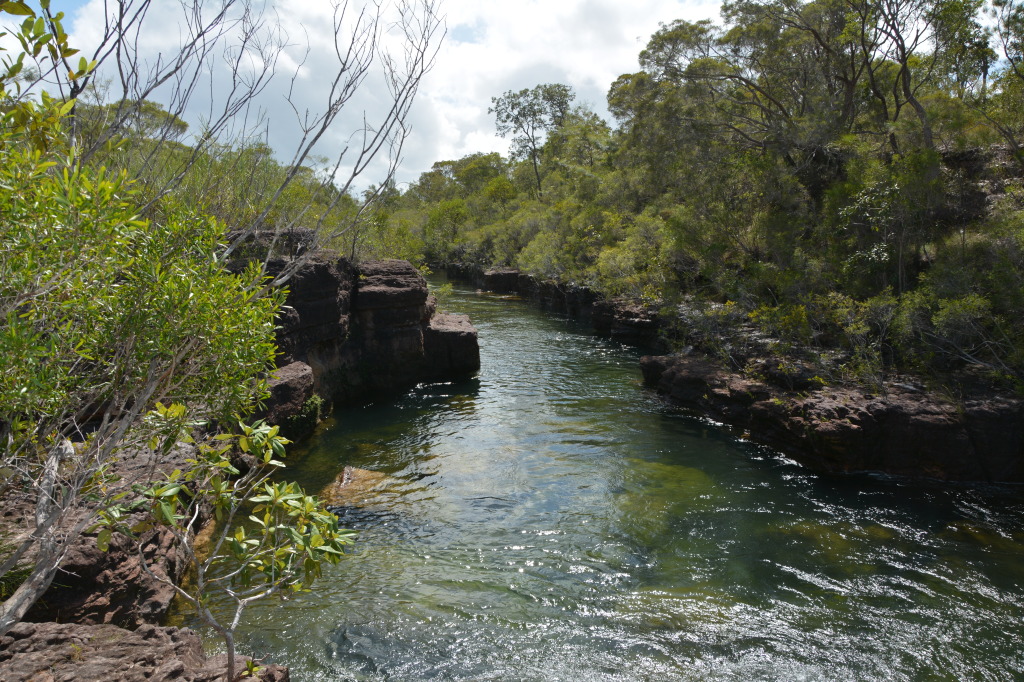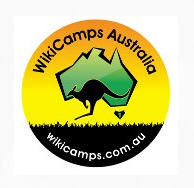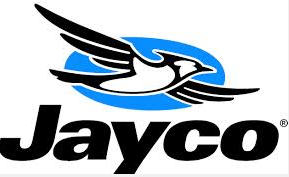If you’re looking for one of the last wilderness regions on Earth, some serious four-wheel-driving and the ability to brag about having reached the northern tip of the Australian mainland, then Cape York should be on your travel destination list.
Above the popular tourist spots in Far North Queensland like Cairns and the Daintree lies a part of Australia that is still remote and travelling there requires detailed planning. The rugged red dirt road of Cape York pushes past secluded tropical beaches, lush rainforests, numerous waterfalls and crocodile filled rivers to the famous outcrop at the top of Australia. Yep, Cape York is a popular destination for travellers and 4WDers alike and on most people’s bucket list while they travel around Australia.
In fact Cape York has a reputation as being a remote, corrugated, crocodile infested region that keeps most caravans on the bitumen at Laura, Cooktown or Cairns. We left our Jayco Expanda at Laura at the back of the Pub where it remained safe for 2 weeks while we travelled on the cape. Kev (the owner of the Pub and Campground is the kind of guy who doesn’t take crap from anyone so knew the van would be safe).
The region has shown a significant increase of travellers over the past few years with better roads and easier access to the more remote areas of the Cape. Still, when it rains as we found out, the roads turn from good to slippery and muddy in a matter of hours.
To the east of Cape York is the Coral Sea and to the west the Gulf of Carpentaria. It spears into the Torres Straight which separates Australia and PNG.
Cape York’s attractions include tropical rainforest, eucalyptus plains, amazing waterfalls and rivers and Australia’s Great Dividing Range. It’s surprising the Great Dividing Range reaches all the way up there and is amazing to see the mountains around Laura and Lakeland. Something that will surprise anyone who visits Cape York for the first time.
Cape York Peninsula also contains many Aboriginal and Torres Strait Islander communities. These contain spectacular specimens of artwork and artifacts that are well worth a visit. The artwork around Laura is definitely worth stopping along the way for.
Best time to visit Cape York
During winter, the dry season, there is little rainfall. This is the essential time to visit, because during the wet season, the roads will become impassable, even for the best modified 4WDs.
To do Cape York, allow at least 10 days which should give you enough time to stock up in Weipa, have a bit of fun on the Old Telegraph track and enjoy a couple of nights in Siesia or Punsand Bay. It will give you enough time to take a photo of yourself and your family at the tip, travel across to the eastern side at Chili beach and travel all the way back to Laura via Bramwell, Musgrave and Coen.
The best time is to travel during the dry season in May and October when the rivers are at their lowest and the humidity is low.
When we visited the Cape in early June 2014, the heavens opened up so we decided to travel from Punsand Bay to Laura in one day. It was a wise decision because the road was closed the day after when a few trucks slipped off the road. It took us 13 hours but allowed us to get back to the Jayco Expanda in Laura before the roads were closed for a few days.
Why travel to Cape York?
Pros
Camping near crystal clear creeks
Reaching the top of Australia
Fantastic fishing
Some of the best 4WD tracks in Australia
Cons
Hard wearing on your vehicle. We did a tyre and had to replace the alternator and tensioner bearing because of the dust and mud. The aircon packed it in as well because we didn’t clean the aircon particle filter. It was completely full of dirt.
Can be crowded during the peak months
The corrugations will test any vehicle
Approx 1000kms there and 1000kms back. It’s a long way on corrugated dirt road!
Fuel and supplies can get pretty pricey. $2.30 a litre for diesel at the top of Australia is not uncommon
Facts about Cape York
Area: approx 140,000km square
Population: 18,000 approx, about 60% indigenous.
Climate: Tropical monsoon, most rainfall occurring between November and April.
Geography: Low floodplain eroded by rivers, split by low escarpments. Eucalyptus scrub and tropical rainforest.
Flora: Over 3000 species of flowering plants. Eucalyptus dominates, as well as many varieties of grasses. In the rainforest, conifers and orchids are common.
Fauna: More than 700 vertebrate land species.Tropical birds are abundant .
Mammals include endangered rodents, as well as wallabies and kangaroos. Crocodiles patrol the rivers and coast so they say but we never saw any. There is a 5 metre croc that lives on the other end of Chili Beach. There is no way we were swimming there!
Cape York Attractions
Attractions in this region are usually to do with either the beautiful natural landscape, or the indigenous culture and its art.
Aboriginal art
Driving the Telegraph Track
Beautiful beaches such as Chili Beach
Station stays such as Bramwell Station
Eliot Falls and Twin Falls
Important towns
Laura, Coen, Weipa, Lakeland, Bamaga, Seisa.
Getting around Cape York
There are two main roads into Cape York, the Peninsula Development Road and the Bamaga Road. The PDR is the main route inside Cape York, and most of it is gravel. There is also the old Telegraph Track, which was replaced by the Bamaga Road and therefore no longer maintained. The Telegraph Track is very degraded, and is popular with 4WDers.
To drive Cape York, you’ll want your own vehicle. Public transport is not really available, apart from within the major towns which include taxis, buses and ferries.
You will need a 4WD, in good condition and with high ground clearance. You may not want to take a standard trailer or caravan thanks to the rough road conditions, so a roof-top tent is a great choice. It’s easy to set up and pack away, and will keep you off the ground and out of the mud.
We saw plenty of caravans up there that were built for offroad but the corrugations and road conditions damage even the best of the offroad caravans.
Be prepared with water, cool clothing and sufficient supplies to last between major towns. Service is not common north of Laura, with supplies being few and far between. You’ll be able to pick up food and other essentials at several towns, but don’t count on finding what you need. In having said that though, we were surprised to find better supplies in Cape York than many other regions in Australia such as Pilbara, Kimberley and especially across the Gulf of Carpentaria.
Mobile phone service doesn’t really exist in Cape York, so make sure you have a method of emergency communication. We use a Spot connect which can send an sms via satellite.
We spent 3 weeks in Cape York and could have stayed longer. We also met people who travelled to the tip of Cape York and back in 4 days and didn’t see anything! Even the boys loved Cape York.

